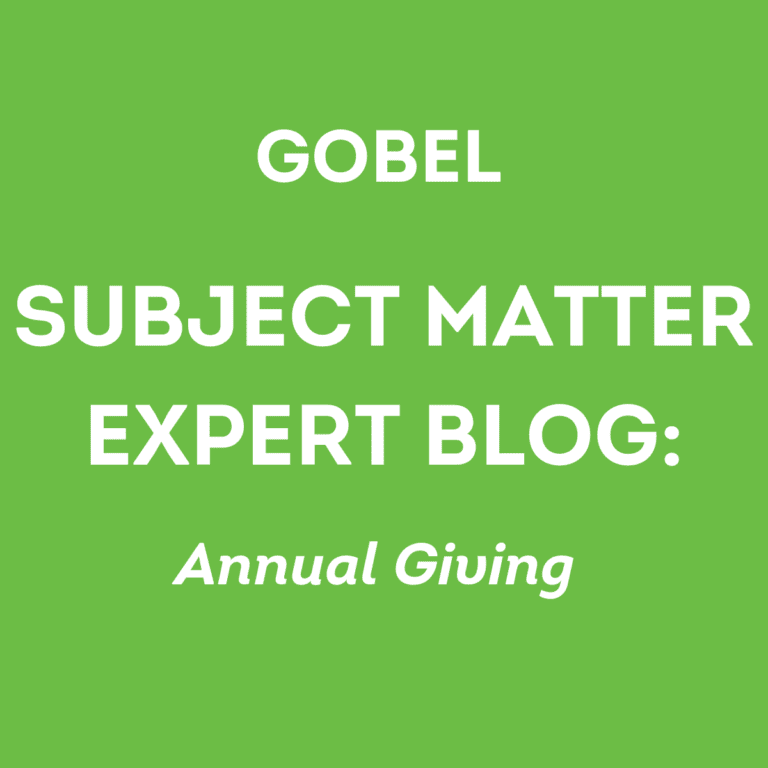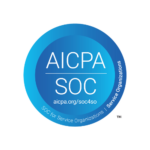
GOBEL Subject Matter Expert Blog: Reconsidering Leadership Annual Giving
By Ann Fisher
Director of Annual Giving, Leadership Annual Giving and Data Services, Michigan Medicine
Many years ago, when I started out in annual giving, I was told that if I wanted to advance my career in fundraising, I would need to become a major gift officer. While I liked working with donors, I really enjoyed the variety and complexity of annual giving work. I decided to stick it out in that area, and I am glad I did. Years later, I am proud to say that I built a successful career in annual giving where I have been able to grow and advance in the area of fundraising that I love most.
That’s why I wanted to hop on the soapbox about leadership annual giving. Although leadership annual giving positions have been around for some time, there still seems to be some misunderstanding around the purpose and importance of these positions in fundraising organizations. In short, we try to treat leadership annual giving officers like major gift officers in training. There are several issues with this mentality.
The first issue with viewing annual giving officers like major gift officers is that the goals of leadership annual giving are different. Like major gift work, leadership annual giving does involve relationship building, but at a different level. Leadership annual giving donors, particularly at the lower levels, are new to the idea of having a closer relationship to your organization. They are often uncomfortable at first with the idea of a visit and tend feel like they are not giving enough to warrant the extra attention. Thus, trying to apply the same major gift visit metrics to leadership annual giving is not setting your LAGOs up for success.
While leadership annual giving officers should always try for visits, particularly with donors at the higher levels of giving, they must know how to effectively leverage other strategies like phone, email, and mail if they are going to be successful in engaging leadership annual giving donors.
Leadership annual giving officers must also spend a significant amount of time doing discovery work. They will have a mix of one-time donors who will need to be disqualified as not likely to renew, loyal leadership annual donors who do not have the capacity or inclination to give more, and donors who have a higher likelihood of ultimately becoming major gift donors. Qualifying or disqualifying donors is a key part of leadership annual giving work, and if done correctly, can help an organization focus efforts on those donors who can be moved through the pipeline to major gifts.
While moving potential major gift donors through the pipeline is a priority, it’s important to not lose sight of that loyal donor group. A large, healthy leadership annual giving base can also be the backbone for annual revenue totals, and many of those donors are highly likely to make planned gifts even if they never become major gift donors. Thus, leadership giving has a transactional component more like annual giving, in that we still need these donors to renew every year. Unlike major gifts, which can take years to develop, leadership annual giving officers must try to renew as much of their base as possible annually. This is critical to the health and long-term success of any institution.
As we all know, it can take 10 years or more for most organizations to move donors out of annual giving to that first major gift. One of the biggest minefields in the major gift pipeline is in leadership annual giving. Often major gift officers will claim these donors because of their potential, but they won’t have the time or capacity to really devote to cultivation, and these donors’ may often lapse due to lack of attention. Sometimes the reverse happens, and prospects are left to sit in annual giving programs too long. By doing this we are not proactive enough to be upgrading them to move quicker through the pipeline.
The next issue is by encouraging leadership annual giving officers to think of these positions as nothing more that entry points into major gifts positions, we are creating a revolving door on our teams. This causes a lack of continuity for our donors at a critical time in building their relationship with our organization. If every year or two they are asked to engage with a new person, are we showing our donors that we are deeply committed to building long-term relationships with them?
So how can we better serve our leadership annual giving donors? By creating leadership annual giving programs that are designed to achieve both goals of leadership annual giving: relationship building and donor renewal. We can also make it so that leadership annual giving officer positions can be longer term or even career positions for those who excel in this unique kind of fundraising. This can be achieved by offering more robust salaries, providing promotion opportunities within leadership annual giving, offering job specific training, and establishing metrics that align with the work they are doing. Correctly structuring and investing in leadership giving programs can have long-term positive impact not only on your annual fundraising efforts, but your pipeline building for major and planned gifts as well.
ABOUT GOBEL SUBJECT MATTER EXPERTS: GOBEL Subject Matter Experts are healthcare philanthropy professionals working in some of the top shops in the country, sharing best practices and insights. For more information about GOBEL’s Subject Matter Expert program, or to suggest a topic for coverage, email erezsnyak@gobelgroup.com.
ABOUT THE AUTHOR: Ann Fisher is a fundraising professional with more than 25 years of experience in annual giving. Ann began her career at Hospice of Michigan where she developed numerous skills from data base management to grant and appeals writing. From there she moved on to University of Detroit Mercy where she spend nearly 20 years in annual giving, eventually becoming their Executive Director of Annual Giving and Data Services. During her time at Detroit Mercy, Ann was instrumental in introducing new initiatives like online giving and crowdfunding while also improving the ROI in phone and mail and coordinating the University’s President’s Cabinet leadership giving program. Ann then spent two years at UC San Diego as Senior Director of Integrated Marketing, where she launched their first Day of Giving and restarted their grateful patient giving program. Ann currently works at Michigan Medicine where she serves as Director of Annual Giving, Leadership Annual Giving and Data Services. In 2021 Ann and her colleagues were selected as CASE Platinum Award Finalists in the Best Practices in Fundraising Award for their Nurses Week Campaign, which raised over $80,000 from 1,300 donors during the height of the pandemic. She has also served as a judge for the CASE Circle of Excellence Awards. In her spare time, Ann is an avid runner and has run several half and full marathons as a charity runner to raise money for various causes.

